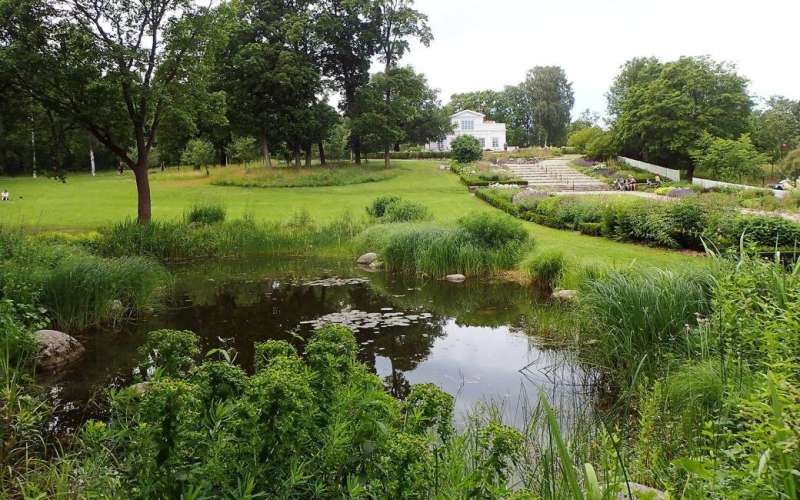Annala pond in the city of Helsinki. Credit: Wenfei Liao
Urban ponds are paradise for aquatic life in the middle of the hustle and bustle of a city. In Finland, ponds are defined as freshwater bodies with diameter less than 200 meters, although there is no clear-cut distinction between the definition of ponds and small lakes. There are over a hundred urban ponds in the capital region of Finland. Many aquatic organisms, such as frogs and aquatic insects, thrive in these urban ponds. Diving beetles are also a common sight in urban ponds.
A research team at the University of Helsinki sampled 26 ponds in the Helsinki Metropolitan Area to investigate how landscape connectivity affects the ecological values of urban ponds. The team recorded up to 60 diving beetle species in their study, which is published in Landscape Ecology.
"In urban landscapes, there are many movement obstacles, such as roads and high-rise buildings, that restrict the dispersal of organisms. Also, the dispersal capacity varies among species, which affects how organisms distribute in a landscape. Take diving beetles as an example: Good fliers are often widely distributed across the landscape, while distribution of poor fliers is often restricted to a certain pond or area in the same landscape. That is to say, the same structural connectivity means different levels of functional connectivity to different taxa or species," says Wenfei Liao from the Faculty of Biological and Environmental Sciences, University of Helsinki.
When the researchers studied 15 fishless ponds and 11 ponds with fish at 11 sites in the Helsinki Metropolitan Area, they found that the longer the distance between ponds is, the lower diving beetle community similarity is. Clustered ponds shared more species than isolated ponds. The results indicate that low structural connectivity can restrict the dispersal of aquatic invertebrates, such as diving beetles.
The results also show that the presence of fish can make ponds functionally disconnected to most aquatic invertebrate species, even though a pond is located close to other ponds.
"So, when creating more urban ponds, we should exclude fish from some of the ponds if we want to support predator-intolerant aquatic invertebrates," says Liao.
More information: Wenfei Liao et al, Diving beetle (Coleoptera: Dytiscidae) community dissimilarity reveals how low landscape connectivity restricts the ecological value of urban ponds, Landscape Ecology (2022). DOI: 10.1007/s10980-022-01413-z
Provided by University of Helsinki
























